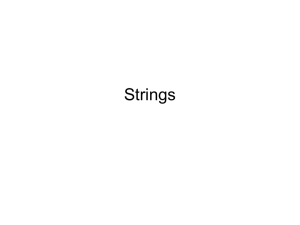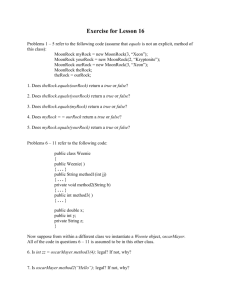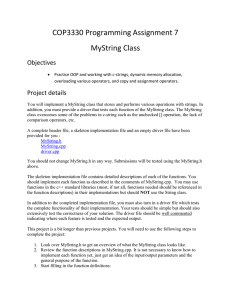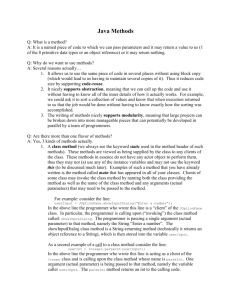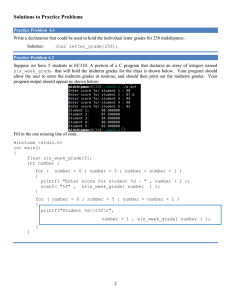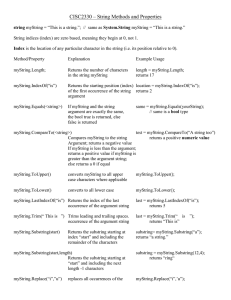Strings
advertisement
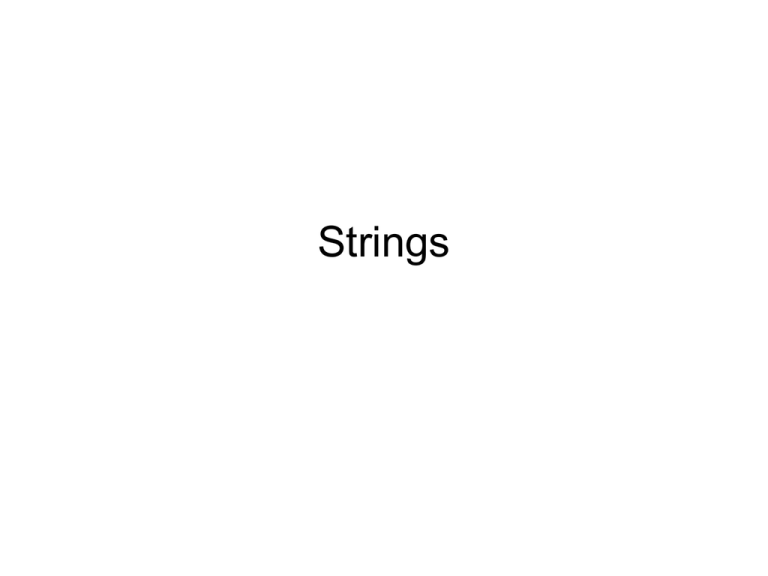
Strings Strings • A string is a series of characters • Characters can be referenced by using brackets • The first character is at position 0 mystring = “the” letter = mystring[2] #letter becomes ‘e’ mystring t h e 0 1 2 length • The len function returns the length of a string mystring=“bob” len(mystring) #3 len(“adam”) #4 length=len(mystring) last = mystring[len-1] #retrieves last char for loops mystring = "CS is cool!" for c in mystring: print c index=0 while index < len(mystring): print mystring[index] index += 1 Slices • Select a segment of a string • Specify [start:end] – include start but do not include end – if you do not specify start slice starts from the beginning – if you do not specify end slices goes to end mystring=“CS is cool” print mystring[6:10] print mystring[2:7] print mystring[:4] print mystring[:] String Comparison/in • == tests to see if strings are the same • >, < compares strings alphabetically • The in operator tests whether a given character appears in a given string – ‘c’ in “chocolate” #true – ‘z’ in “chocolate” #false Immutability • Strings are immutable – they cannot be changed string module • Contains useful methods for strings http://docs.python.org/lib/string-methods.html • Dot notation allows us to call a method on a string object import string mystring=“adam” string.find(mystring, “a”) #returns index of first instance found mystring=“CS is cool” mystring.split() #result [‘CS’,’is’,’cool’] newstring = mystring.replace(“CS”, “Econ”)

